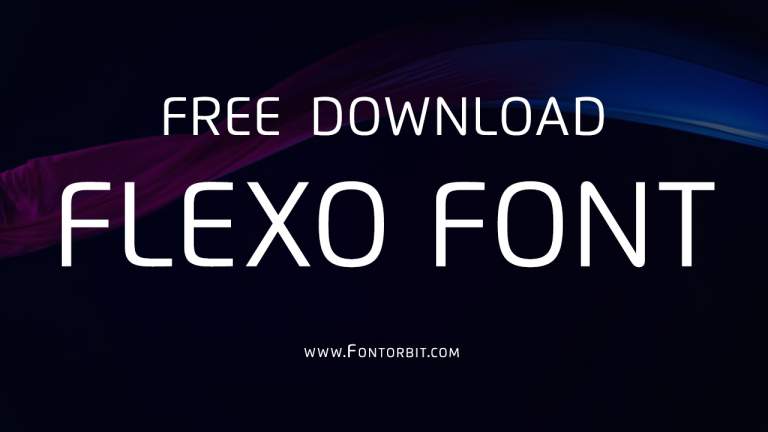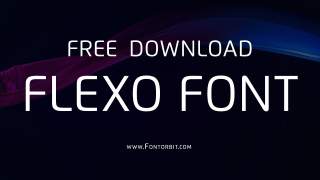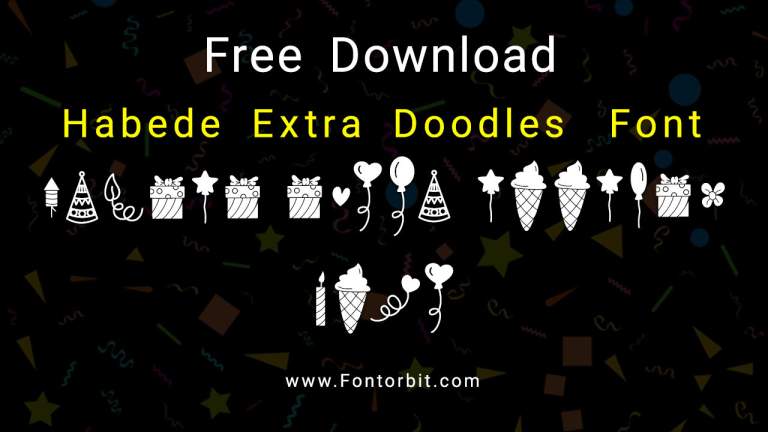Helvetica Neue Font: Essential Design Tips – A Quick Summary
Unlock stunning designs with Helvetica Neue! This versatile font is perfect for logos, websites, and branding. Learn how to match weights, adjust spacing, and strategically pair it with other fonts for maximum impact. Master Helvetica Neue for clean, modern, and professional results.
Hey design enthusiasts! Jillur Rahman here from FontOrbit. Ever looked at a design and just felt… right? Often, that feeling comes down to typography. And when it comes to clean, universally appealing fonts, Helvetica Neue is a true classic. But how do you make this ubiquitous font truly shine in your projects? It’s easy to fall into the trap of just typing words and expecting magic. However, with a few smart techniques, you can elevate your designs from good to absolutely unforgettable.
This guide is your friendly roadmap to mastering Helvetica Neue. We’ll cover everything from choosing the right weight to creative spacing tricks and effective pairings. Get ready to make this powerful font work harder for you!
Why Helvetica Neue Reigns Supreme in Design
Helvetica Neue is more than just a typeface; it’s a design phenomenon. Its clean lines, balanced proportions, and remarkable neutrality have made it a go-to choice across industries for decades. From corporate logos to public signage, its legibility and modern aesthetic are undeniable. But its widespread use can also be a challenge – how do you make it stand out when everyone else is using it?
The secret lies in understanding its nuances and applying thoughtful design principles. It’s about using Helvetica Neue intentionally, not just by default. This font offers a vast family of weights and styles, providing incredible flexibility. When used correctly, it can convey sophistication, clarity, and trustworthiness.
Understanding the Helvetica Neue Family
Before we dive into design tips, it’s crucial to appreciate the sheer breadth of the Helvetica Neue family. This isn’t just one font; it’s an extensive collection of variations, each with its unique personality and purpose. Understanding these different styles is the first step to using Helvetica Neue effectively.
The Core Weights: From Light to Bold
At its core, Helvetica Neue offers a spectrum of weights, allowing you to create hierarchy and emphasis with ease. These are the building blocks of most designs:
- UltraLight: Ethereal and delicate, perfect for subtle headings or as a background element.
- Thin: Slightly more present than UltraLight, offering a refined and airy feel.
- Light: A softer, more approachable option for body text or less prominent headings.
- Regular/Roman: The workhorse. Balanced for readability, suitable for general body text and moderate headings.
- Medium: Offers a bit more substance than Regular, good for subheadings or when you need slightly more presence.
- Bold/Semibold: Provides strong emphasis for key headlines, calls to action, or important statements.
- Heavy/Black/Condensed: For maximum impact. These very bold weights are excellent for eye-catching headlines or display purposes where you want text to dominate.
Italics and Styles
Each of the primary weights often comes with an italic counterpart. These slanted versions are not just for emphasis; they can add a touch of elegance or directness. Helvetica Neue Condensed styles also exist, offering a narrower form factor that’s great for fitting more text into tight spaces, often seen in tabular data or longer captions.
Exploring these variations in a tool like Google Fonts (though Helvetica Neue isn’t directly on Google Fonts, understanding font families is key!) or a professional type foundry will show you the range available.
Essential Design Tips for Helvetica Neue
Now, let’s get practical. Here are the key strategies to make Helvetica Neue sing in your next design project.
1. Master the Art of Weight Selection
Choosing the right weight is paramount. It’s how you guide the reader’s eye and establish the importance of different text elements. Don’t shy away from using multiple weights from the Helvetica Neue family in a single design.
- For Headlines: opt for bolder weights like Bold, Heavy, or Black. These demand attention.
- For Subheadings: Medium or Semibold often strike a good balance, bridging the gap between the headline and body text.
- For Body Text: Regular or Light are your best friends. Prioritize readability – ensure the text is comfortable to read for extended periods.
- For Captions or Fine Print: Consider Light or Thin for a subtle, understated presence.
Pro Tip: Aim for a clear visual hierarchy. The difference in weights should be noticeable and intentional, helping users quickly scan and understand your content.
2. Embrace Letter Spacing (Tracking and Kerning)
Even the most beautiful font can look awkward if the spacing between letters is off. Helvetica Neue, being a geometric sans-serif, can sometimes feel a bit too uniform or too tight depending on the context.
- Tracking (Overall Spacing): For headlines or short phrases in bold weights, slightly increasing tracking can open up the letters and give them an airier, more sophisticated feel. For very light weights, you might even tighten tracking slightly.
- Kerning (Space Between Specific Pairs): While Helvetica Neue has good default kerning, certain letter combinations (like ‘AV’ or ‘To’) can sometimes look visually awkward. Manually adjusting kerning for key phrases, especially in large display sizes, can make a significant difference.
Example: Consider the word “AVAIL”. In some contexts, the space between ‘A’ and ‘V’, and ‘V’ and ‘A’ might need fine-tuning. Even a tiny adjustment can improve the flow.
3. Strategic Use of Size
Size is your other primary tool for creating hierarchy. Combine thoughtful size choices with appropriate weights for a potent combination.
- Headlines: Significantly larger than body text.
- Subheadings: Larger than body text, but smaller than headlines.
- Body Text: Comfortable reading size, typically between 10-14pt depending on the font and context.
- Captions/Footnotes: Smaller than body text.
Readability Note: Google’s own research highlights the importance of font size for accessibility. Ensure your body text is large enough for everyone to read comfortably, especially on screens.
4. Color and Contrast: Making It Pop
Because Helvetica Neue is so neutral, its color and contrast become even more important. It’s a blank canvas waiting for your color choices.
- High Contrast: For maximum readability, ensure strong contrast between your text color and background. Black text on a white background is classic for a reason.
- Strategic Color: Use your brand colors strategically. A bold headline in a brand color can grab attention. Body text, however, usually benefits from more neutral colors like black, dark gray, or dark blue for readability.
- Subtle Variations: Different weights of Helvetica Neue can also be used with slight color variations to add subtle depth. For instance, a dark gray body text and a slightly lighter gray subheading.
5. Pairing Helvetica Neue with Other Fonts
While Helvetica Neue is incredibly versatile, sometimes you want to add a contrasting element. This is where font pairing comes in. The key is to choose fonts that complement, rather than compete, with Helvetica Neue.
When to Pair Helvetica Neue:
- To add personality: If your brand needs a bit more flair or warmth than a pure sans-serif can offer.
- For specific content types: Maybe a script font for a special announcement, or a serif for a more traditional quote.
- To create stronger hierarchy: A completely different font can make a headline or a pull quote stand out more dramatically.
Effective Pairing Strategies:
- Serifs: A classic pairing. A well-chosen serif font can add warmth and a traditional feel. Look for serifs with clean lines that don’t have overly ornate features.
- Script or Handwritten Fonts: Use these sparingly! They are best for very short, impactful elements like a signature, a quote, or a small decorative element. Ensure the script is legible.
- Other Sans-Serifs: This can be tricky. To make it work, you usually need a sans-serif with a very different structure or personality – perhaps something more geometric, humanist, or even condensed.
Example Pairing:
- Headlines: Helvetica Neue Bold
- Body Text: Garamond (a classic serif)
This creates a sophisticated contrast. For a more modern feel:
- Headlines: Helvetica Neue Heavy
- Body Text: Open Sans Regular (a friendly, humanist sans-serif)
6. Whitespace: The Unsung Hero
Never underestimate the power of negative space, or whitespace. For a font as clean and structured as Helvetica Neue, ample whitespace can make it feel even more refined and breathable.
- Generous Margins: Don’t cram your text. Allow plenty of space around your content blocks.
- Line Spacing (Leading): Adjusting the space between lines of text is crucial for readability. For Helvetica Neue, especially in body copy, slightly increasing leading can prevent text from feeling cramped. A good starting point might be 1.4 to 1.6 times the font size.
- Spacing Between Elements: Create clear visual separation between headings, subheadings, paragraphs, and images using whitespace.
7. Consider Context and Purpose
Where will your design be seen? This greatly influences how you should use Helvetica Neue.
- Web vs. Print: On screen, legibility at smaller sizes is paramount. Ensure sufficient contrast and consider slightly larger font sizes and leading. In print, you have more control over paper texture and ink spread, but the same principles of hierarchy and readability apply.
- Brand Identity: Does your brand need to feel ultra-modern, classic, friendly, or authoritative? Helvetica Neue can do all these things, but your choices in weight, size, and pairing will push it in a specific direction.
- Accessibility: Always design with accessibility in mind. Ensure sufficient color contrast and font sizes. The Web Content Accessibility Guidelines (WCAG) offer excellent standards for contrast ratios.
When to Be Cautious with Helvetica Neue
While Helvetica Neue is incredibly popular and versatile, there are times when you might want to think twice or use it with extra care:
- Overly Generic Branding: Its ubiquity means that in some markets, it can feel a bit too common or safe. If you need a truly unique voice, you might need to pair it strategically or consider an alternative.
- Extreme Display Sizes (without care): While bold weights are great for headlines, sometimes at very large sizes, the geometric nature can feel stark. Pairing or subtle spacing adjustments can help.
- Projects Requiring High Personality: If your project demands a very decorative, ornate, or overtly quirky style, Helvetica Neue might be too neutral.
Key Takeaways: A Quick Reference
Here’s a handy table to summarize the core principles:
| Design Element | Helvetica Neue Tip | Why It Matters |
|---|---|---|
| Weight Selection | Use a range from UltraLight to Black for clear hierarchy. | Establishes importance and guides the reader’s eye. |
| Spacing (Tracking/Kerning) | Adjust for headlines and tight letter pairs. | Improves readability and creates a more polished look. |
| Size | Scale elements intentionally for distinct levels. | Reinforces visual hierarchy and user comprehension. |
| Color & Contrast | Ensure high contrast for readability; use brand colors strategically. | Makes text legible and visually appealing; reinforces brand. |
| Font Pairing | Pair with contrasting serifs or clean sans-serifs for personality. | Adds depth and prevents visual monotony. |
| Whitespace | Provide ample margins and comfortable line spacing. | Enhances readability and gives a sense of elegance. |
Frequently Asked Questions (FAQ)
What is the main difference between Helvetica and Helvetica Neue?
Helvetica Neue is an updated version released in 1983. It features improved spacing, more refined character designs, and an expanded range of weights compared to the original Helvetica. Think of Helvetica Neue as a more polished and versatile evolution.
Is Helvetica Neue good for body text?
Yes, Helvetica Neue Regular or Light at an appropriate size (typically 10-14pt) with good line spacing (leading) is excellent for body text. Its clarity and neutrality make it highly readable, especially on screens and for informational content.
Can I use Helvetica Neue for my logo?
Absolutely! Helvetica Neue is a popular choice for logos due to its timeless, clean, and authoritative feel. Brands like American Apparel and Jeep have famously used variations of Helvetica. Just ensure your logo stands out from competitors using the same font.
What fonts pair well with Helvetica Neue?
Classic serifs like Garamond, Times New Roman, or Georgia pair beautifully for a sophisticated contrast. More modern humanist sans-serifs like Open Sans or Lato can also work. For a bolder statement, a script font can be used sparingly for emphasis.
Is Helvetica Neue free to use?
No, Helvetica Neue is a commercial font and typically requires a license for use, especially for professional design work, web embedding, or commercial products. While you might find it pre-installed on some Apple devices, it’s important to check licensing for broader application.
How do I make Helvetica Neue look unique?
To make Helvetica Neue unique, focus on thoughtful typography: select specific weights, adjust letter spacing (tracking/kerning), use creative size variations, employ a striking color palette, and pair it with unexpected but complementary fonts. The context and thoughtful application are key.
Conclusion: Elevate Your Designs with Intentional Typography
Helvetica Neue is a powerful tool in any designer’s arsenal. Its clean, neutral aesthetic offers a reliable foundation for countless projects, from corporate branding to digital interfaces. By understanding its extensive family of weights, mastering the subtleties of spacing and size, and employing strategic font pairings, you can move beyond simply using Helvetica Neue to truly mastering it.
Remember, the goal isn’t just to make text legible; it’s to communicate effectively and evoke the right feeling. Whether you’re designing a logo, a website, or marketing collateral, treat Helvetica Neue with the respect it deserves. Experiment with its different variations, pay attention to the details, and don’t be afraid to use whitespace generously. With these tips, you’re well on your way to creating designs that are not only professional and clean but also engaging and memorable. Happy designing!






Leave a Comment